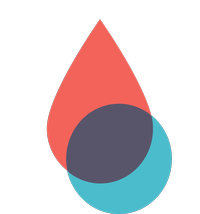Home › Biological sample › Infectious diseases
Infectious diseases biological samples :
Utilization in research and sourcing
Infectious diseases, often regarded as a pervasive threat in the realm of global health, encompass an impressive diversity of pathogens and clinical manifestations. Their study holds crucial importance not only for understanding the underlying mechanisms driving their spread and virulence, but also for the development of effective prevention, diagnostic, and treatment strategies.
From seasonal influenza to outbreaks of emerging diseases such as COVID-19, infectious diseases continue to challenge global healthcare resources and shape research priorities in public health. In this context, exploring the diversity of infectious agents, understanding their evolution and interaction with the host, is essential for bolstering our arsenal against these perpetual threats to human health.

To address these challenges, Labtoo offers a unique service of specimen sourcing to laboratories, Biotechs, Medtech, and Pharma companies.
Our mission is clear : we are committed to conducting comprehensive research on all types of biological samples from infectious diseases, whether they originate from human or animal sources.
Labtoo offers a unique approach to finding research samples. Instead of relying on a standard catalog, our team meticulously selects samples from biobanks or collections that match the specific needs of each project. If necessary, we are also capable of establishing new collections to meet research needs.
We prioritize flexibility and customization in our infectious sample services to meet the individual requirements of each client.
Explore Labtoo's Service for Your Biological Sample Research
Labtoo assists you in sourcing biological samples from infectious diseases patients. Our team manages the entire project of transferring biological materials from inception to sample delivery.
- Feasibility assessment of sample availability or clinical collection from referenced clinical centers
- Validation of regulatory aspects
- Establishment of a contractual framework
- Dispatch of desired samples under appropriate conditions
- Transfer of associated clinical data
- Additional analytical and experimental services
Types of available samples
Urine
In the context of a urinary tract infection, a urine sample is collected to perform a cyto-bacteriological examination of urine (CBEU) in order to confirm the presence of the pathogen. These samples can subsequently be stored under appropriate conditions for future research projects.
Stool
In cases of gastrointestinal infection, the collection of fecal samples is crucial for identifying the pathogen. These samples can also be preserved for future research purposes.
Cerebrospinal Fluid (CSF)
In the case of a neurological infection, collecting cerebrospinal fluid (CSF) samples is necessary to identify the pathogen as well as its stage of progression. These samples can also be preserved for future research purposes.
Other Samples
Other types of specimens such as nasopharyngeal, respiratory, or vaginal swabs are also commonly used in infectious disease research.
- Fresh tissues from patients with a skin infection
- Fresh tissues
- FFPE tissues
- Whole blood from patients with an infection
- PBMC
- Plasma
- Serum
- Leukapheresis
Typical Associated Clinical Data
-
- Age
- Sex
- Ethnicity
- Detection method
- Serological result
- Infectious load
- Follow-up Treatment
- Symptomatology
- Medical imaging
- Positivity/négativity for certain infections
- Others

Our service identifies clinical sites capable of preparing and transferring a sample collection for a specific project.
Contact our team to discuss your project.










